Migraine is a very frequent pathology since it affects 12% of the French population, i.e. approximately 7 million people.
Women are three times more affected than men and pay a higher price for this condition. Female hormones certainly play an important role in this, since the attacks often worsen during menstruation, whereas they are less frequent during pregnancy and after menopause.
- The forms of migraines.
Migraines mainly manifest themselves in two forms.
- In the case of migraine without aura, it is a persistent pain, often pounding, usually located on one side of the head and aggravated by physical effort. Nausea and intolerance to light and noise are associated with it. Seizures last between 3 hours and 3 days.
- More rare, migraine with aura has warning signs. It is indeed preceded by neurological disorders such as visual disturbances, language disorders, tingling and dizziness.
- An attempt to explain the mechanism of migraine.
The migraine attack is caused by a double phenomenon of inflammation and dilation of the blood vessels of the head. The mechanism of this phase is not yet well known but it comes from a stimulation of the vegetative nerves and involves chemical mediators including serotonin, dopamine and nitric oxide.
- Triggering factors for migraine.
It seems that factors such as diet are involved in triggering migraines. However, there are many other factors involved:
- Psychological factors: annoyance, anxiety, stress.
- Lack of or too much sleep (seizures after a "lie-in").
- Hormonal factors: contraceptive pill, menstrual cycle.
- Mechanical factors: cervical problem.
- Variable and very personal factors from one individual to another.

- Migraine and food intolerance.
A growing body of evidence suggests that so-called "vascular" headaches - whether sinus headache, nerve tension headache, or stress headache - would fall into the register of food intolerances and allergies and would often be caused by a food or foods that the body does not tolerate well. In fact, one in ten migraine sufferers has a food sensitivity.
Food is never the only factor involved in headaches, other concomitant factors are obviously involved. Only one factor is absolutely decisive and easily controllable: your diet.
In any case, this is really a very complex problem. Because atmospheric changes, dazzling light, penetrating odors and the menstrual cycle are all factors that favor cephalic pain and are absolutely uncontrollable for individuals with a hereditary background or a predisposition to this health concern. It is generally considered that several factors are usually combined in the onset of headaches. Thus, red wine can trigger a migraine at one time and be absolutely harmless in other circumstances. Under the simultaneous effects of red wine, Roquefort cheese and stress, for example, you are likely to develop a migraine. The quantities ingested also count for a lot in this type of ailment.
The vasoconstrictive effects of some foods can disrupt blood flow and cause a variety of transient neurological symptoms, including visual disturbances. The blood vessels around the brain may also become enlarged and inflamed by food substances, which can cause severe pain. This theory explains why blood-thinning anti-platelet agents, such as acetylsalicylic acid, often relieve headaches. All foods that contain the chemical "triggers" - chocolate, fermented cheese, bacon, red wine - are likely to cause headaches. It is also possible that certain foods affect some of the highly complex mechanisms that regulate the release of prostaglandins. This would seem to have a direct impact on pain and inflammation. Because headaches are related to both blood vessel changes and inflammatory processes, foods that affect these physiological processes (e.g., fish oil and ginger) should normally be able to reduce or relieve them.
According to Dr. Seignalet, we would be dealing more with a pathology by immune complexes. Food could act in two ways. Directly, by constituting themselves a source of peptides, or indirectly, by attacking the intestinal mucosa, which would allow the passage of food or bacterial peptides and would trigger the same phenomenon as in other autoimmune pathologies. Another theory considered by the same author is that of fouling. If some migraines are diet-induced, it follows that the best method for treating them should be a nutritional change. The application of Dr. Seignalet's hypotonic diet has proven to be beneficial for 17 out of 20 patients who have adopted it.
- Some foods not recommended for migraineurs.
- citrus fruits (orange, grapefruit, lemon, lime), pineapple and juices of these fruits
- figs, dates, nuts and grapes,
- bananas, grapes, red plums, canned figs, avocados,
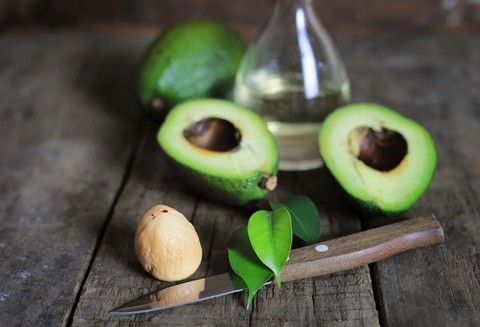
- the seeds of gourgane or marsh beans, lima beans, small white beans, pea pods,
- onion,
- milk,
- the cheese,
- yogurt and sour cream,
- eggs,
- red wine,
- chocolate,
- sugar,
- wheat,
- corn,
- coffee,
- tea,
- coca-cola,
- offal,
- sauerkraut,
- meat in general,
- Salted and smoked or sodium nitrite treated meats as well as certain fish such as herring,
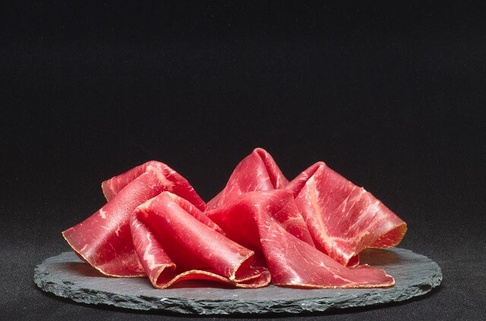
- Very salty foods (fish in brine, smoked meat, canned food...),
- alcohol (champagne, spirits; vodka would be less harmful than other strong alcoholic drinks),
- Products containing leavening (certain types of breads and cakes),
- Foods that contain salicylates.
Conclusion: In order to know the trigger foods, avoid eating for one month, the foods mentioned above. If your headaches regress or disappear completely, do a tolerance test, re-introducing the suspected foods one at a time, every other day or once a week.
- Additives
Foods rich in food additives such as tyramines, nitrites (in smoked meats), aspartame (e.g.: Canderel...), monosodium glutamate. Vascular headaches triggered by MSG or monosodium glutamate are very common ("Chinese restaurant syndrome": burning and tingling in the face and chest, sweating, acute abdominal pain, dizziness). The use of this additive to accentuate the flavor of food is now widespread in the development of industrial foods. Unfortunately, however, manufacturers are not required to clearly indicate the presence of this additive on the label.
Some additives result in chemical transformations that can cause headaches. Headaches will be more or less severe depending on the degree of individual vulnerability to the condition and the cumulative effects of food and other factors involved.
- Dairy Products
They are very often implicated, as are allergenic foods. We now know that amines, entering the chemical composition of proteins (contained in dates), are powerful "activators" of headache.
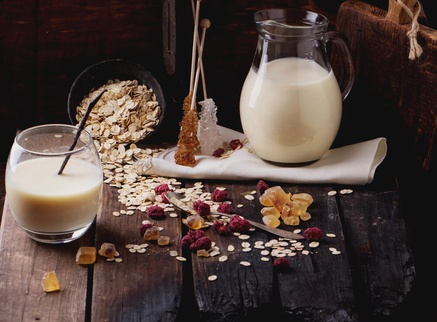
So it is with phenylethylamine, found in chocolate, and octopamine, found in citrus fruits. The amine most often implicated in headache, however, remains tyramine, found in abundance in the following foods:
- Alcoholic beverages (wine, in particular);
- Firm cheeses and fermented cheeses of which the richest in tyramine are: Stilton, Roquefort, strong Cheddar, Danish Roquefort, Mozzarella, Swiss Gruyere, Feta, grated Parmesan, Gorgonzola.
- Red wine
It has the worst reputation as an instigator of headaches. The harmful agents would be the congeners (group of substances of which tyramine is a part), present in abundance in the constituents of grapes.
What is commonly called "hangover" is partly explained by the large quantity of congeners contained in red wine, champagne and bourbon, beverages that are very often implicated in headaches. Vodka, which contains the least amount, would be less often incriminated. This does not mean that vodka binges are safe! Excessive alcohol consumption can cause headaches. The mechanisms underlying the action of alcohol on the brain have not yet been clearly demonstrated.
Some research suggests that too much alcohol disrupts metabolism, causing a kind of hypoglycemia (a lack of sugar) in the brain. Some experts recommend having a small high-fructose snack before going to sleep, such as fruit juice. "Fructose helps metabolize the chemical compounds in alcohol that are responsible for headaches and various other symptoms," says Dr. Solomon. It is also important to drink plenty of fluids after drinking a large amount of alcohol because alcohol dehydrates.
- Dark Chocolate
Note that white chocolate contains cocoa "butter" but no chocolate liquor (source of tyramine) and does not have the same effects. Migraine sufferers need not be wary of it.
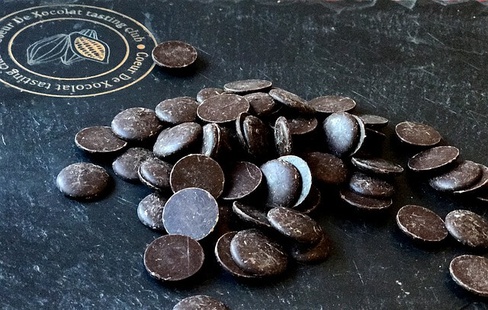
- Caffeine
Caffeine is also one of the factors - if not the factor - most often incriminated in headaches, even in individuals not predisposed to these ailments. Beware of weaning too quickly!
- Frozen foods
If you eat frozen foods, it is recommended that you eat or drink slowly.
To lessen the shock that causes pain, place the food to be eaten momentarily in front of the mouth to give the palate time to cool down before swallowing. If you don't follow these guidelines, you may get a severe frontal headache after eating a very cold food, ice cream or frozen yogurt. This type of headache does not usually last long (twenty to thirty seconds) and can spread to the nasal passages, temples and cheeks.
- At home.
Food is often the cause of migraines in children. They disappear in almost all cases (the success rate was 93%!), when children stop eating allergenic foods.
Among those that triggered the most allergic symptoms were:
- cow's milk is still the number one suspect
- the eggs
- chocolate
- oranges
- wheat
- the cheese
- tomatoes
Further down the list, with less impact, are pork, beef, corn, soy, tea, oats, coffee, peanuts, bacon, potato, apple, peach, grape, chicken, banana, strawberry, melon and carrot.
- Some remedies to try if you have a migraine.
- The ginger
This is an old and well-known remedy for headaches.
This spice has been used for centuries by some populations as a remedy for headache, nausea and nervous disorders. It is believed to work in much the same way as aspirin and other migraine medications. It seems to block the synthesis of prostaglandins, hormonal substances that play a role in pain and contribute to the regulation of inflammatory reactions in which histamine is involved, among others. By blocking prostaglandin synthesis, ginger reduces inflammation and pain in the same way that aspirin does.
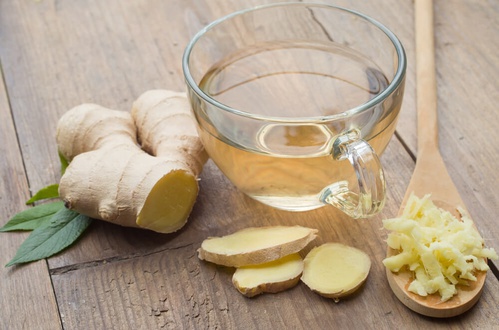
- The fish oil.
If you suffer from migraines, your blood may be abnormally viscous, so you may want to eat foods rich in essential fatty acids, fish oils or blood-thinning enzymes.
Substitute fish oil for saturated fats. People who are prone to migraine should reduce their intake of saturated animal fats. These stimulate the secretion of a hormonal substance that triggers a series of reactions that promote migraine.
- Foods rich in vitamins B6, C, and E as well as those rich in essential fatty acids that reduce blood viscosity may relieve some migraines.
- Infusions of matrix(do not consume for more than 14 consecutive days), mint, rosemary, ginger root, chamomile flowers, lavender flowers, lime blossoms may be beneficial.
Conclusion
Unfortunately, there is no miracle or standard treatment for migraines, since their origins can be extremely varied. The provisions and treatment will be different depending on the triggering factor(s) which may be vascular, neurological, psychogenic, mechanical or digestive. In order to solve or alleviate the problem, it is absolutely essential to detect its origin and to adapt the measures and treatment according to the results obtained.



